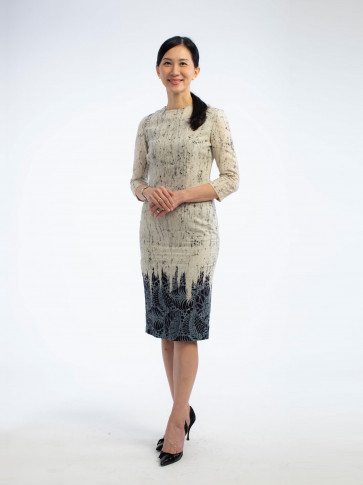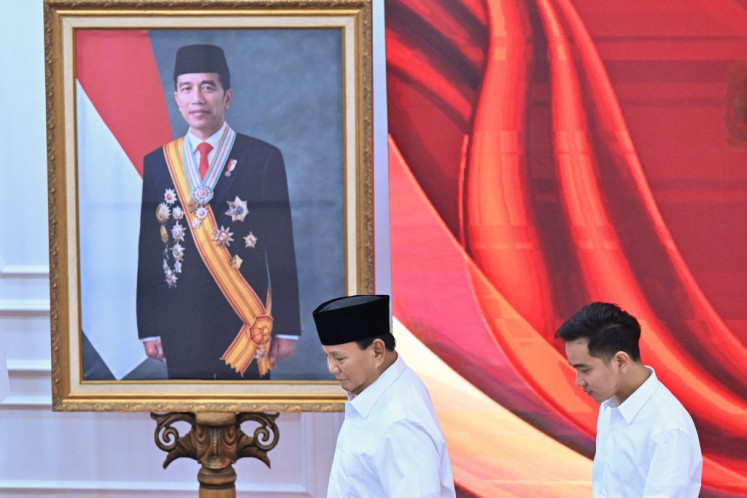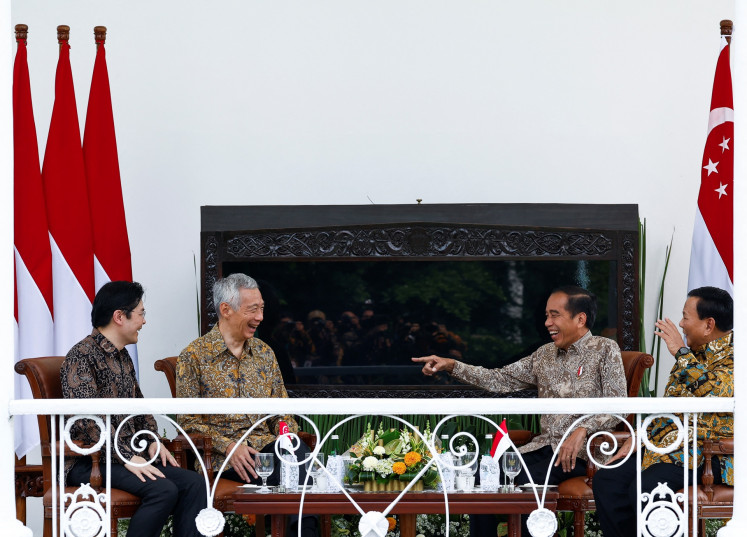Reforms make Supreme Court more productive
After years of reforms, the Supreme Court has improved its productivity in resolving cases, resulting in the lowest-ever case pile at the end of last year
Change Size

A
span>After years of reforms, the Supreme Court has improved its productivity in resolving cases, resulting in the lowest-ever case pile at the end of last year.
The country’s top court produced more than 20,000 rulings in 2019 compared to 17,638 in 2018, lifting its productivity rate to almost 99 percent from 95 percent in the preceding year.
Ninety-six percent, or more than 19,000, of the rulings were made in less than three months since the case was accepted by the court.
Supreme Court chief justice Hatta Ali said the achievements were due to simplified and accelerated judicial processes the court had implemented over the past five years.
He said the court had been modernizing itself with the establishment of e-court and e-litigation systems. The e-court had handled more than 47,000 cases and the e-litigation had been met with high participation with more than 21,000 people, 172 government agencies and 972 legal entities using it in 2019.
“Modernization through e-court and e-litigation is also the judicial institutions’ contribution to carrying out the mandate to support the ease of doing business in Indonesia,” Hatta said during the Supreme Court’s annual report release on Wednesday.
Overall, judicial courts in Indonesia handled more than 6.6 million cases in 2019, with 19,377 cases handled free of charge for cases involving poor people.
The Supreme Court has been criticized for years for sluggishness in issuing rulings. The number of cases in arrears had reached more than 10,000 in 2012. Last year, the court brought that figure down to 217, from 906 in 2018 and 1,388 in 2017.
Hatta attributed the increased productivity to the chamber system the court implemented back in 2011, which separated cases and judges into civil, criminal, religious, state administration and military categories.
“The implementation of the chamber system has produced significant results in handling cases, especially through the simultaneous application of file reading systems and the simplification of the ruling format for cassation and judicial reviews,” he said.
Before the chamber system was implemented, court justices often gave different rulings for similar cases due to different interpretations.
President Joko “Jokowi” Widodo applauded the Supreme Court for its “massive reforms”, praising Hatta for the more streamlined judiciary system.
“I would like to thank and express my deepest appreciation to the ranks of the Supreme Court under the leadership of Hatta Ali, who has carried out massive reforms of our justice system to deliver justice more quickly and transparently to the people,” the President said during the annual report release event.
“We greatly appreciate the efforts of the Supreme Court to bring about simple, quick and low-cost justice.”
During the event, Hatta also revealed that the courts had contributed around Rp 66 million (US$4,705.88) in nontax income to the country, an increase from Rp 40.3 million in 2018. The Supreme Court had also utilized 98 percent or Rp 8.87 trillion of the Rp 9.05 trillion budget given to it.
Indonesia Judicial Research Society (IJRS) executive director Dio Ashar praised the progress made by the Supreme Court, contrasting it to 2014, when the court was criticized for drawn-out judicial processes.
He, however, reminded the justices not to compromise on the quality of rulings just to meet the productivity targets. He expressed concern that, given the large number of cases the court has to handle, it would shift its focus toward finishing as many as possible.
Dio said one indicator for the less-than-desirable quality of rulings could be seen in their disparity, which could still be found even after the court adopted the chamber system.
IJRS, formerly known as the Indonesian Judicial Monitoring Society (MAPPI), conducted a study in 2017 where it found disparities in corruption case rulings between 2011 and 2015.
“There were similar cases, in which charges and state losses incurred were similar, but how come one defendant was sentenced to one year and the other was sentenced to five years? What caused the difference?” Dio told The Jakarta Post on Wednesday, adding that the court never had a clear reason for such inconsistency.
Foundation of the Indonesian Legal Aid Institute (YLBHI) chairwoman Asfinawati also said she still found inconsistency in Supreme Court rulings.
She cited as an example of violations Law No. 18/2013 on forest protection, under which in 2018 a farmer in Surokonto Wetan, Central Java, was sentenced to 8 years of prison and fined Rp 10 million but then pardoned. A similar case happened in 2018 involving a farmer from Banyuwangi, East Java, and the verdict exonerated the defendant of all charges.
“We see that there is no uniformity in the justices’ decisions,” Asfinawati told the Post.
Dio suggested that the government establish guidelines for Supreme Court justices to prevent disparities in rulings.
“[The guidelines should stipulate criteria for] rulings, so that they conform to [people’s] sense of justice.” (mfp)









